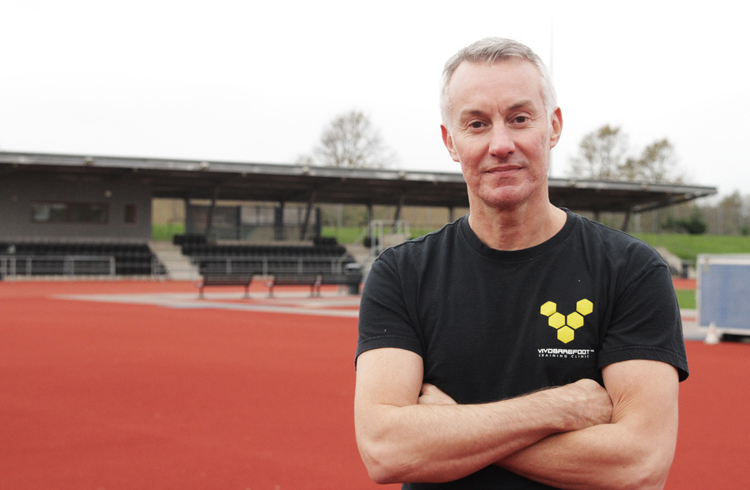Lee Saxby is the world’s foremost expert on barefoot running. He has spent 20 years studying biomechanics, athletic training and evolution biology, and has spent 10 years coaching barefoot running techniques.
When Chris McDougall returned from the Copper Canyons, the location of his best-selling book Born to Run, and was suffering from plantar fasciitis, it was Saxby who he turned to. After 10 minutes with him, McDougall was cured – for good.
MR caught up with the barefoot guru to learn more.
Why do so many runners struggle with injury?
Running injuries are the result of either a ‘software’ problem or a ‘hardware’ problem. By software, I mean running technique – which a lot of people are happy to try to change. By hardware, I mean the body itself – which people are more reluctant to change. For instance, before anyone starts to run barefoot or in minimal shoes, I would suggest they first walk around barefoot and do some deep squats, which will improve the range of movement in the ankle. So the decision to go ‘barefoot’ involves more than just buying a pair zero-drop running shoes; it’s a lifestyle change.
What do you think of the book Born to Run?
Born to Run is a fantastic book but it’s had the unfortunate effect of making people think that simply by taking their shoes off they’ll be able to run for hundreds of miles like a bulletproof Tarahumara Indian. This will not happen.
What are the hallmarks of skilled running?
There are some overriding principles that we all agree on: an upright posture, not over-striding and a quick, fluid cadence, somewhere between 170-190. I never coach my athletes to lean forwards. It’s the worst coaching cue in the world, because as soon as you ask someone to lean they do it from the hip instead of the ankle. Instead, I teach people to run faster through hill work, which is basically sprinting in disguise. Once people can run fast downhill, with their legs landing quickly underneath their bodies, they begin to understand what skilled running should feel like.
What’s your view on forefoot running vs heel striking?
I actually don’t coach foot position. You see lots of ‘barefoot’ runners basically landing on their toes with their foot out in front of them, thinking they’re running correctly. They’re not, and they’ll soon have lots of Achilles and calf problems. The key is to get people landing underneath their body. There is such a thing as ‘skilled heel striking’, too, where the heel touches the ground first but loads underneath the body.
What’s your belief on the best running footwear?
The shoes you walk around in all day are more important than the shoes you run in. I would encourage people to walk around in a zero-drop shoe with a roomy toe-box. Over time, it will lengthen the Achilles and strengthen the foot – it’s basically free foot conditioning. When you run, you pick the tools for the job. Have you seen how thick huaraches [the Tarahumara sandals] are? They’re about a cm – quite thick. The Tarahumara are not interested in barefoot running, because it wouldn’t be appropriate in the Copper Canyons. I put the emphasis on technique rather than footwear, although I do think zero-drop, thin-soled shoes with a wide toe-box, like the kind on offer at Vivo Barefoot, help to encourage more skillful running. Minimalist shoes can work for runners of all shapes and sizes, but the heavier you are the more skilful you have to be. The good news for runners trying to lose weight is that you don’t have to run fast to do it – a gentle run with a quicker cadence will have the same effect.
Would you like to see other sports re-thinking their footwear?
I want to see a revolution in all footwear. So much of what people wear defies the anatomical laws of the foot. Takesomething like a football boot. Sure, it needs the studs for traction but there’s absolutely no need for it to be so rigid or to scrunch the toes at the front.
Lee Saxby’s new website www.borntorun.com will be launching in March 2015.







